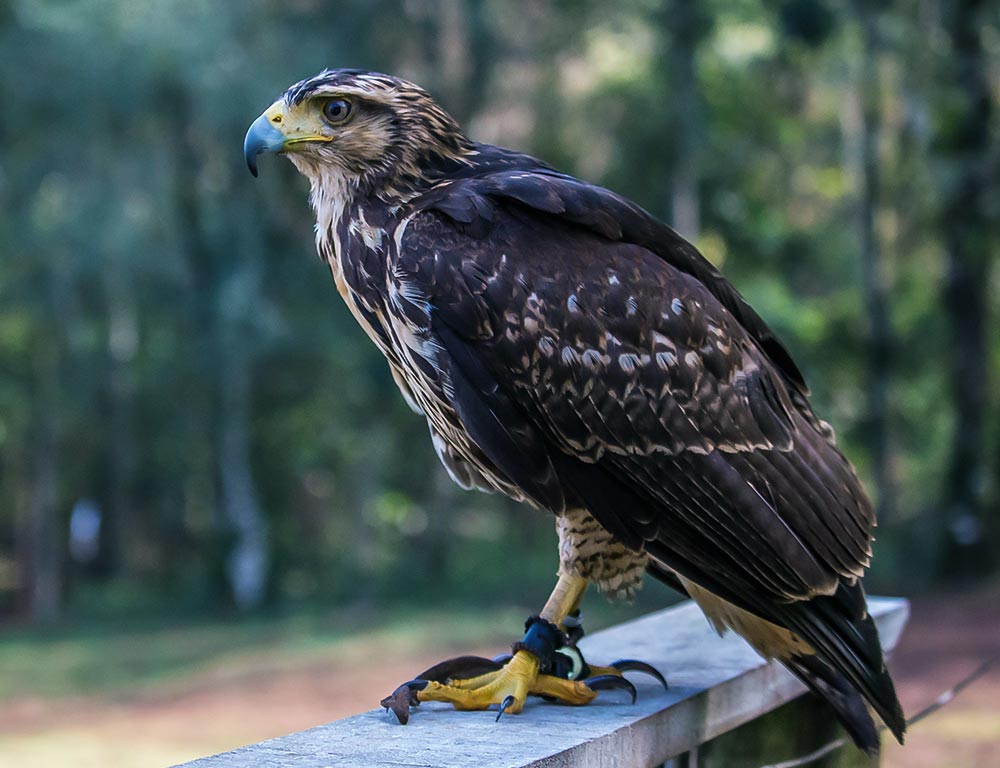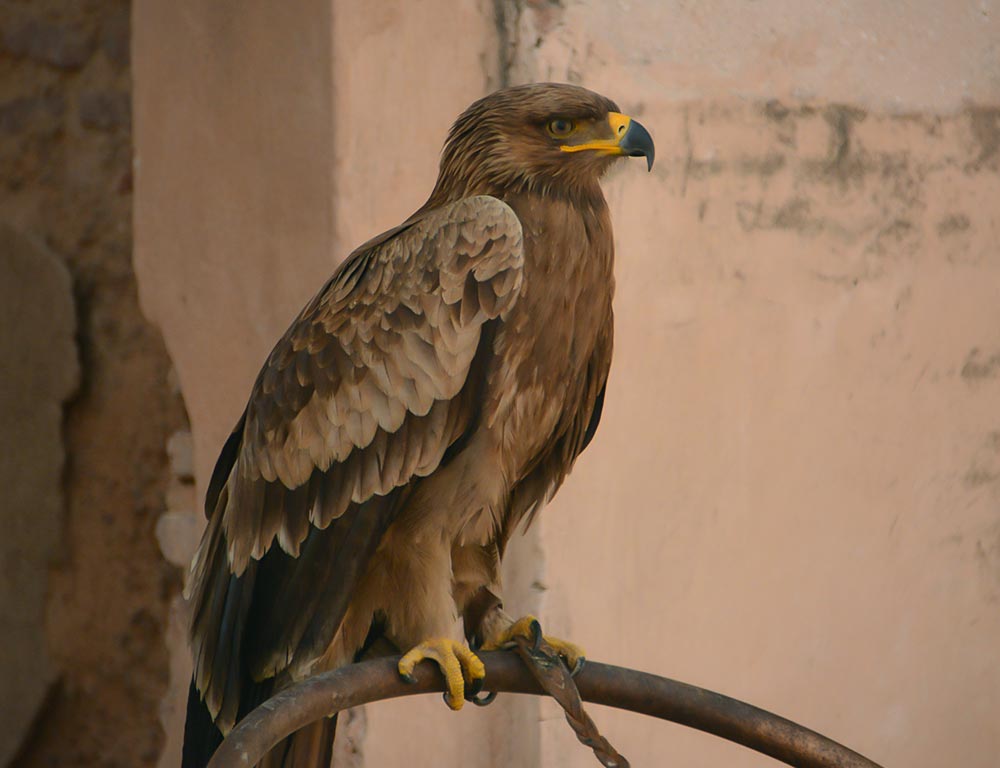Eagles in Virginia symbolize nature’s resilience and the delicate balance between wildlife and human activities. Home to two prominent eagle species, the Bald Eagle and the Golden Eagle, Virginia’s skies are graced by these majestic birds of prey.
Considering their ecological significance and cultural importance, the conservation and preservation of eagles in this region have become paramount.
Virginia’s avian landscape is enriched by its soaring wings, from the iconic bald eagle, a testament to successful conservation efforts, to the regal golden eagle with its awe-inspiring presence.
This introduction sets the stage to delve into the characteristics, conservation challenges, and strategies essential for safeguarding the future of eagles in the diverse habitats of Virginia.
Why There Are Not Many Species of Eagles in Virginia?
The number of eagle species in a particular region, such as Virginia, is influenced by various ecological factors, including habitat suitability, food availability, and historical factors.
In the case of Virginia, there are indeed several factors that contribute to the limited number of eagle species:
Bald Eagle Dominance
The bald eagle (Haliaeetus leucocephalus) is a prominent and widespread eagle species in North America, including Virginia.
Bald eagles are adaptable and can be found in various habitats, from coastal areas to inland water bodies. Their adaptability and territorial behaviour might limit the presence of other eagle species in the same region.
Habitat Preferences
Different eagle species have specific habitat preferences. For example, the Steller’s sea eagle (Haliaeetus pelagicus) primarily inhabits coastal regions and is more common in the far northern parts of the Northern Hemisphere, making it less likely to be found in Virginia.
Historical Distribution
The historical distribution of eagle species can also play a role. Some eagle species may have historically had a more limited range, and habitat changes or climate over time may have influenced their distribution.
Competition
Eagles can be territorial, and the presence of a dominant species, such as the bald eagle, may limit the habitat available for other eagle species. Bald eagles, being opportunistic feeders, might outcompete other eagles for food resources.
Conservation Status
Some eagle species may be less common due to conservation concerns. If a species has a smaller population or faces threats such as habitat loss, pollution, or hunting, it may be less likely to thrive in a particular region.
It’s important to note that the bald eagle is a conservation success story, as it has rebounded from near-extinction in the lower 48 states and is now a common and iconic species.
While other eagle species may not be as prevalent in Virginia, the presence of the bald eagle remains a significant and positive aspect of the state’s avian biodiversity.
General Features of Eagles in Virginia

Eagles found in Virginia, primarily the iconic Bald Eagle (Haliaeetus leucocephalus), share several common characteristics contributing to their adaptability and success in the region’s diverse ecosystems.
Here are seven key features that define eagles in Virginia:
Distinctive Appearance
Eagles in Virginia, especially the Bald Eagle, exhibit a striking appearance with a white head and tail contrasting against a dark brown body.
This distinctive plumage, achieved at maturity around five years of age, aids in easy identification.
Large Size
Eagles are notably large birds of prey, and those in Virginia are no exception. With impressive wingspans ranging from 6 to 7 feet, these birds are well-suited for soaring and hunting across various landscapes, including coastal areas, rivers, and lakes.
Adaptability to Water Habitats
Most eagle species in Virginia, particularly the Bald Eagle, display a strong affinity for water habitats. Rivers, lakes, and coastal areas provide abundant food resources, including fish, waterfowl, and other aquatic prey.
Powerful Beak and Talons
Eagles have powerful beaks and talons designed for grasping and tearing prey. Their hooked beaks are ideal for tearing apart the flesh of captured animals, while strong talons help secure prey during hunting and feeding.
Excellent Vision
Eagles possess exceptional eyesight, a crucial adaptation for spotting prey from great distances.
Their keen vision enables them to identify potential food sources while soaring high above the landscape, contributing to their efficiency as hunters.
Territorial Behavior
Eagles in Virginia, like many raptors, exhibit territorial behaviour. They establish and defend territories that provide access to suitable nesting sites and abundant food resources.
This territoriality helps prevent competition and ensures a steady supply of prey.
Highly Skilled Flyers
Eagles are renowned for their aerial prowess. They are adept at soaring, gliding, and precisely navigating the skies.
This flying proficiency not only aids in hunting but also facilitates long-distance migrations for those species that undertake seasonal movements.
The eagles of Virginia, particularly the Bald Eagle, embody a set of characteristics that contribute to their success in diverse habitats.
Their adaptability, powerful physical features, and impressive flying abilities make them both a symbol of strength and an integral part of Virginia’s natural heritage.
Types of Eagles in Virginia
Virginia has two prominent eagle species, the Bald Eagle (Haliaeetus leucocephalus) and the Golden Eagle (Aquila chrysaetos).
Both species play significant roles in the state’s ecosystem and are revered symbols of strength and freedom. Let’s delve into the characteristics and lifestyles of each of these majestic birds of prey.
1. Bald Eagles

- Scientific Name: Haliaeetus leucocephalus
- Population: The bald eagle population in Virginia has seen a remarkable recovery, and it is considered a conservation success story. As of the last estimates, the state had several thousand nesting pairs.
- Life Span: Bald eagles typically live up to 20 to 30 years in the wild.
- Size: Adult bald eagles stand about 28 inches tall.
- Weight: They weigh between 8 to 14 pounds.
- Food: Their diet primarily consists of fish, but they are opportunistic feeders and may also consume waterfowl and small mammals.
- Wingspan: Bald eagles have an impressive wingspan ranging from 6 to 7 feet.
Bald eagles are iconic symbols of American wildlife, and their lifestyle reflects adaptability and resilience.
Preferring habitats near large bodies of open water, such as rivers and lakes, they build large nests in tall trees, often near their favoured fishing grounds.
Their diet primarily consists of fish, and they are skilled hunters, using their powerful talons to snatch prey from the water’s surface. Bald eagles are known for their impressive courtship displays involving aerial acrobatics.
These eagles exhibit territorial behaviour and defend their nesting territories vigorously. They construct massive nests, often adding to them each year.
Bald eagles are also known for their remarkable recovery from endangered status, thanks to conservation efforts that have mitigated threats such as habitat loss and the use of pesticides.
2. Golden Eagles

- Scientific Name: Aquila chrysaetos
- Population: Golden eagles have a more limited presence in Virginia than bald eagles, with a smaller population, likely numbering in the hundreds.
- Life Span: In the wild, golden eagles can live up to 20 years or more.
- Size: Adult golden eagles are around 28 to 40 inches tall.
- Weight: They weigh between 6 to 15 pounds.
- Food: Golden eagles are versatile hunters, preying on various animals, such as mammals, birds, and reptiles.
- Wingspan: Golden eagles have an impressive wingspan ranging from 6 to 7.5 feet.
Golden eagles are majestic raptors known for their powerful flight and hunting prowess.
They prefer a variety of habitats, including open landscapes, mountains, and cliffs. Unlike bald eagles, golden eagles are less tied to aquatic environments, showcasing their adaptability to diverse terrains.
These eagles are skilled hunters, using their speed and agility to pursue prey. They are known to take on a variety of animals, from small mammals to birds.
Golden eagles are solitary birds, often maintaining large territories that they fiercely defend against other eagles. Their nests, called eyries, are typically built on high cliffs or in trees. Courtship displays involve aerial acrobatics and mutual soaring.
Golden eagles have a strong cultural significance in various societies and have been revered for their regal demeanour and hunting abilities. In Virginia, the golden eagle adds a distinct and awe-inspiring element to the state’s avian diversity.
How to Preserve Eagles in Virginia?
Preserving eagles in Virginia is essential to maintain the ecosystem’s health and ensure these majestic birds’ continued presence. Here are seven comprehensive strategies for eagle conservation in the state:
Habitat Protection and Restoration
Preserving and restoring natural habitats, especially those near water bodies where eagles nest and hunt, is crucial.
Implementing measures to prevent habitat loss due to urbanization, deforestation, and pollution helps maintain suitable environments for eagles.
Regulation and Monitoring of Human Activities
Enforcing and continually monitoring regulations that protect eagles from human disturbances is vital.
This includes managing activities such as construction, logging, and recreation in areas known to be frequented by eagles. Regular monitoring ensures adherence to guidelines and timely intervention if necessary.
Mitigation of Human-Wildlife Conflicts
Addressing conflicts between eagles and human activities, such as fishing or agriculture, is essential.
Implementing strategies like fishery management practices and promoting coexistence can help minimize negative interactions and reduce the impact on eagle populations.
Conservation Education and Outreach
Educating the public about the importance of eagles and their role in the ecosystem fosters a sense of stewardship.
Outreach programs, workshops, and educational materials can raise awareness about the eagles’ significance and the need for conservation efforts.
Monitoring and Research
Regular monitoring of eagle populations, nesting sites, and behaviours provides valuable data for conservation planning.
Continued research into eagle biology, migration patterns, and environmental threats allows for informed decision-making and adaptive management strategies.
Collaboration with Stakeholders
Establishing partnerships with government agencies, non-profit organizations, local communities, and other stakeholders enhances the effectiveness of conservation efforts.
Collaborative initiatives can pool resources, expertise, and support to address challenges and implement comprehensive conservation measures.
Emergency Response and Rehabilitation
Having a robust emergency response plan for injured or sick eagles is crucial.
Establishing wildlife rehabilitation centres and trained personnel to respond to eagle emergencies ensures that injured birds receive prompt and appropriate care, contributing to their recovery and release back into the wild.
By integrating these strategies into a holistic conservation approach, Virginia can ensure eagles’ continued presence and thriving populations, contributing to the region’s overall biodiversity and ecological balance.
Wrapping Up
Preserving eagles in Virginia demands a multi-faceted approach encompassing habitat conservation, human-wildlife conflict resolution, educational outreach, and collaborative efforts.
By safeguarding their natural habitats, regulating human activities, and fostering a sense of stewardship through education, Virginians can ensure the longevity of these iconic birds.
Monitoring, research, and emergency response plans further contribute to the comprehensive strategy needed to protect eagles.
As stewards of the environment, communities, organizations, and policymakers are responsible for implementing and upholding these conservation measures.
The enduring presence of eagles sustains the state’s rich biodiversity and symbolizes the success of collective efforts in wildlife conservation.